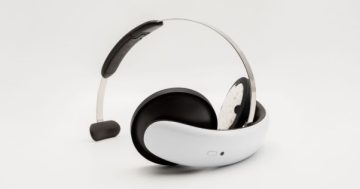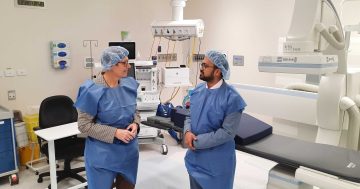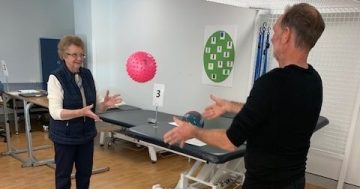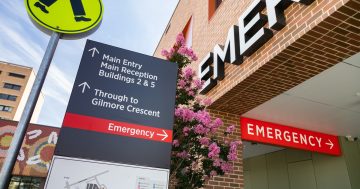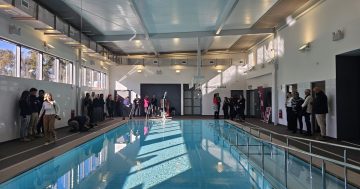
Endometriosis is a chronic condition that can cause debilitating pain. The University of Canberra is trying to understand and treat it. Photo: File.
Endometriosis is a poorly understood condition that can cause painful and debilitating menstruation. Now the University of Canberra is hoping to pioneer a new treatment for the chronic condition.
Endometriosis is estimated to affect about 10 per cent of women. It occurs when the endometrium – the tissue that is expelled from the uterus during menstruation – spreads to other organs.
Symptoms are variable, which can lead to a significant delay in diagnosis. Endometriosis Australia estimates it takes an average of 6.5 years to be diagnosed.
It can cause extreme pain and has been linked to infertility and some cancers. Currently, treatments involve hormones to suppress the menstrual cycle or surgery.
A team at UC is studying how people with and without endometriosis react to pain to better understand the condition.
“We really started our research in endometriosis about two years ago. And a lot of the team … have done some work in pain, cognition, physical activity, brain stimulation, all the areas that we’re interested in, but not in endometriosis,” said lead researcher and senior lecturer Dr Andrew Flood.
“By working with participants in a lab setting rather than relying on simulations, we’re able to more accurately measure and understand participants’ actual responses to pain stimuli.”
Participants with endometriosis are then taken for brain stimulation. In this treatment, electrical impulses influence brain activity to study whether it could have a role in combating pain for those with the condition.
There are several types of brain stimulation therapy, but the best known is electroconvulsive therapy, also known as electroshock therapy.
Brain stimulation has been successfully used to manage other pain disorders, as well as Parkinson’s, and even depression. But according to the researchers, it has never been trialled with endometriosis.
Dr Flood said there are misconceptions around brain stimulation.
“A good way to categorise the brain stimulation that we use is non-invasive. We’re not cutting the skin in any way, we’re not inserting anything, it’s all on the surface of the skull. And for this project, we’re looking at transcranial magnetic stimulation that delivers magnetic pulses,” he said.
“What we describe to participants is that you’ll feel something similar to someone flicking a helmet that’s on your head. And that’s the best way that we can describe it. It is a strange sensation.”
PhD candidate Tino Toufexis is conducting a more exhaustive study into how people with chronic pain think about the future by studying the psychological and cognitive aspects of pain.
Mr Toufexis, who conducts the targeted brain stimulation, said that the research has a lot of potential.
“These act on the pain pathways in the brain, as well as on cognitive pathways that relate to how we think about the future – in this way, we have measures of both their pain and future thinking,” he said.
“We’re trying to see, are there any differences in those with endometriosis and their ability to modulate pain by seeing the differences in their pain sensitivity after receiving another painful stimulus elsewhere.”
So far, their research has indicated that people with endometriosis do experience and think of pain.
Early results indicate that people with endometriosis report feeling more helpless but less fearful about pain. The opposite of how chronic pain sufferers normally react.
Kira Robertson is part of the study, motivated to volunteer because of her own experience with endometriosis. Ms Robertson has dealt with the condition since she was 14.
“As I went through the study and learned more, my interest in the cognitive aspect of pain really grew,” she said.
“While my pain reduced somewhat for four years, it has started returning in the last year … and I think that this work to help understand chronic pain faced by so many people is really crucial.”
The research team is currently looking for more participants for the project. For more information or to volunteer, you can reach out to the team at APSresearch@canberra.edu.au.












